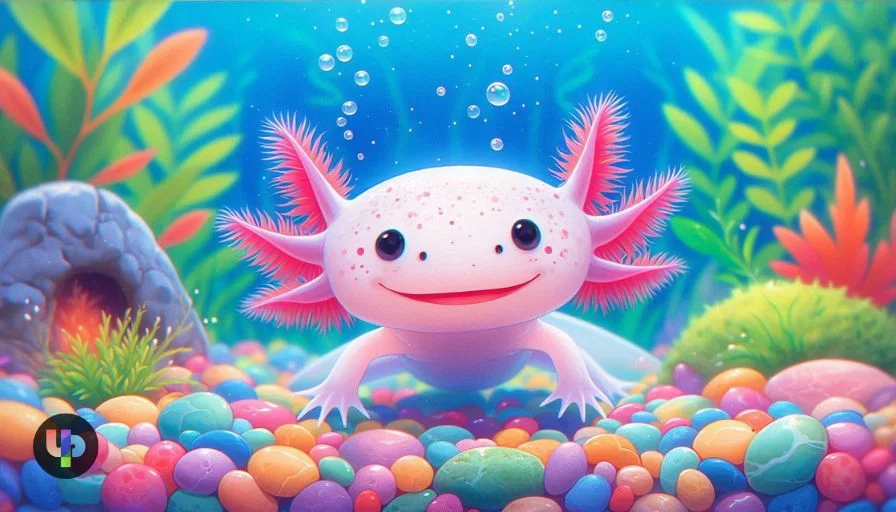In the world of Internet culture, cute or “kawaii” creatures dominate various platforms, creating fandoms around the world. Among these charming beings is the axolotl, often referred to as the “Mexican walking fish.” Known for its unique biology, smiling face, and perpetually youthful appearance, the axolotl has earned a strong presence in popular culture. The phrase kawaii:dyf8c8wezxm= axolotl
= axolotl” seems to encapsulate the trend of cuteness (kawaii) with this adorable aquatic creature.
This article delves into the concept of “kawaii” as it applies to the axolotl, exploring its origins, biological uniqueness, and cultural impact. kawaii:dyf8c8wezxm= axolotl
What Does Kawaii Mean?
The term kawaii (かわいい) originates from Japan and translates to “cute” or “adorable” in English.
The Fascination with Axolotls
Axolotls, scientifically known as Ambystoma mexicanum, are a species of salamander that are famous for their ability to regenerate limbs, hearts, and even parts of their brains. Native to lakes like Lake Xochimilco near Mexico City, axolotls are one of the most unique amphibians due to their trait of neoteny—they retain their larval features throughout their lives.
Axolotls remain in their aquatic, juvenile state even as adults, sporting gills and a streamlined body. Their wide, smiling faces and external gills contribute to their endearing, almost cartoonish appearance, making them a perfect fit for the kawaii culture. With their button-like eyes, soft color variations, and seemingly permanent smiles, it’s no wonder the axolotl has become a favorite in the world of cute mascots and internet phenomena.
Kawaii Axolotl: The Perfect Match
The concept of “kawaii” revolves around things that are innocent, playful, and irresistibly adorable—qualities that the axolotl embodies naturally. The phrase kawaii:dyf8c8wezxm= axolotl
= axolotl” hints at a classification or identification of the axolotl as a kawaii icon in digital spaces, potentially referring to a product code, social media tag, or even digital asset tied to the axolotl’s image.
Here’s why the axolotl fits perfectly within the kawaii world:
- Innocent Appearance: Axolotls look perpetually young and innocent due to their wide-set eyes, pinkish-white bodies, and undeveloped limbs. This baby-like appearance is central to what makes them so cute.
- Gentle Nature: Axolotls are relatively docile creatures, which adds to their appeal as a symbol of peace and cuteness.
- Pastel Colors: Common axolotl colors range from pink to pale yellow to brown, which match the pastel palettes often associated with kawaii aesthetics.
- Internet Popularity: Axolotls have gained massive popularity in recent years on platforms like Instagram, TikTok, and YouTube, where their quirky and serene behaviors are adored by fans worldwide. Their popularity is often intertwined with other kawaii creatures like cats and bunnies.
Axolotls in Pop Culture
Axolotls have found their way into anime, video games, and toy collections, becoming a symbol of innocence and uniqueness. Some notable examples include:
- Minecraft: The popular video game introduced axolotls as a friendly mob in their 2021 “Caves & Cliffs” update. Their inclusion boosted the axolotl’s popularity among younger audiences and the gaming community.
- Pokémon: The Pokémon Wooper and its evolved form Quagsire are inspired by axolotls, exhibiting the creature’s aquatic features in a cute, battle-ready form.
- Animal Crossing: Axolotls have appeared as villagers in the game, further cementing their place as a beloved virtual pet.
Conservation and the Role of Kawaii Culture
Despite their worldwide fame, axolotls are critically endangered in the wild due to habitat loss and pollution in their native waters around Mexico City. There are ongoing conservation efforts to protect the species and their habitat, but their numbers continue to dwindle.
In this regard, kawaii culture plays a crucial role. The widespread love for axolotls has encouraged many to raise awareness about the species’ plight, often in adorable ways, such as merchandise, fundraisers, and social media campaigns. The use of kawaii imagery helps garner attention and support for conservation efforts, transforming the axolotl from just an adorable pet to a symbol of environmental awareness.
Axolotls as Pets: What to Know
The popularity of axolotls as cute and charming pets has increased due to their internet fame. However, they require specific care:
- Aquatic Habitat: Axolotls must live in water at a stable, cool temperature (around 60–64°F). They need a large tank to thrive, and proper filtration is necessary to keep the water clean.
- Diet: They primarily eat live or frozen foods like worms, brine shrimp, and pellets designed for amphibians.
- Regenerative Powers: One of the most fascinating aspects of axolotls is their ability to regenerate limbs. If injured, they can grow back parts of their body, a feature that has captured the imagination of scientists and enthusiasts alike.
Despite their low-maintenance reputation, owning an axolotl requires commitment, and prospective owners must understand their specific needs: Reade more: finalizeit
How the Internet Contributes to the Axolotl’s Popularity
From memes to merchandise, axolotls have a presence on nearly every platform. Influencers and artists have created digital stickers, GIFs, and wallpapers featuring the axolotl’s smiling face. On sites like Redbubble or Etsy, creators sell kawaii-style axolotl art that brings together pastel colors and exaggerated cuteness.
In the realm of GIFs and wallpapers, the axolotl has become a go-to image for mood-lifting content.
The Axolotl’s Future in Popular Culture
Given its unique biological characteristics and irresistible cuteness, the axolotl is set to remain a fixture in kawaii culture for years to come. Its appeal crosses borders, and its continued presence in video games, social media, and conservation efforts suggests that it will only grow in popularity.
Conclusion
The axolotl, with its unique biology and undeniably cute appearance, has become an icon of kawaii culture, symbolizing innocence, happiness, and environmental awareness. Whether it’s through the lens of internet culture, conservation efforts, or as a beloved pet, the phrase kawaii:dyf8c8wezxm= axolotl
= axolotl” captures the growing fascination with this quirky aquatic creature.


